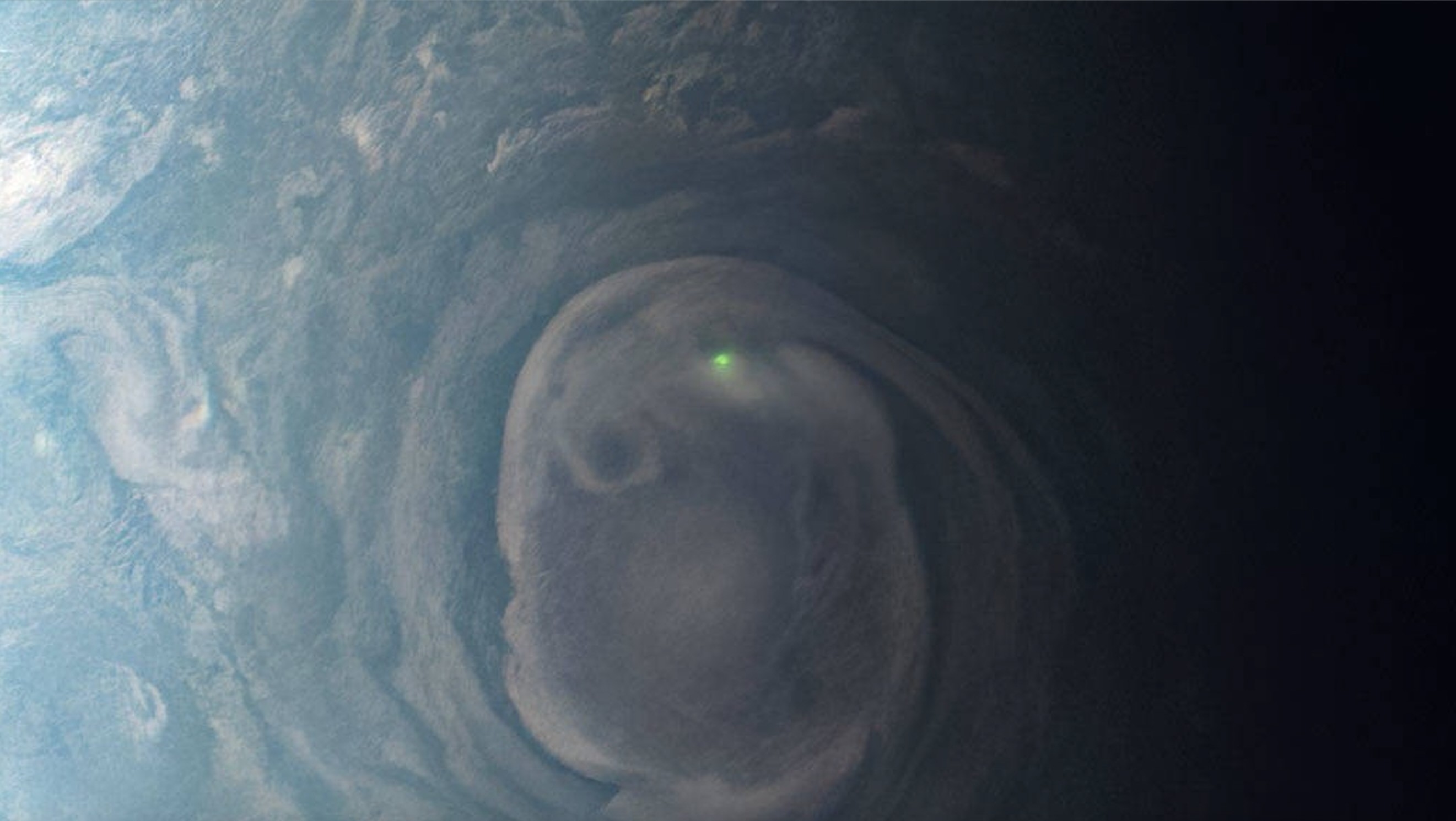
NASA's Juno probe keeps giving us great looks at Jupiter's wild weather.
Juno has been looping around Jupiter on a highly elliptical path since July 2016, making detailed observations of the gas giant during close passes over its poles.
During its 31st such flyby, on Dec. 31, 2020, Juno captured a great shot of the greenish glow from a lightning strike inside a swirling vortex near Jupiter's north pole. The spacecraft was just 19,900 miles (32,000 kilometers) above the planet's cloud tops at the time, NASA wrote in a description of the image, which the agency released on Thursday (June 15).
Related: Jupiter, the solar system's largest planet (photos)
Citizen scientist Kevin Gill processed the newly released image using raw data gathered by Juno's JunoCam instrument, NASA officials added. The Juno team welcomes such collaborations; you can try your image-processing hand at the JunoCam site.
This was not Juno's only brush with Jovian lightning — far from it, in fact. The spacecraft has observed many strikes in Jupiter's thick atmosphere, helping scientists determine that lightning on the gas giant is quite similar to the bolts we see here on Earth.
There are some key differences, however.
Get the Space.com Newsletter
Breaking space news, the latest updates on rocket launches, skywatching events and more!
"On Earth, lightning bolts originate from water clouds, and happen most frequently near the equator, while on Jupiter lightning likely also occurs in clouds containing an ammonia-water solution, and can be seen most often near the poles," NASA officials wrote in the image description.
Juno has now performed 51 close passes of Jupiter, or "perijoves," as the mission team calls them. The next one will take place on June 23.
The first 35 perijoves were conducted during Juno's primary mission, which ended in July 2021. The probe's data have given scientists a much better understanding of Jupiter's structure, formation and evolution.
"Juno's many discoveries have changed our view of Jupiter's atmosphere and interior, revealing an atmospheric weather layer that extends far beyond its clouds and a deep interior with a diluted, or 'fuzzy,' heavy element core," NASA officials wrote in a mission description.
Juno is now flying on an extended mission that will last through at least September 2025, provided the spacecraft stays healthy in Jupiter's harsh radiation environment. During the extended mission, Juno is taking a wider look at the entire Jovian system, studying the planet, its rings and its many moons.
Join our Space Forums to keep talking space on the latest missions, night sky and more! And if you have a news tip, correction or comment, let us know at: community@space.com.

Michael Wall is a Senior Space Writer with Space.com and joined the team in 2010. He primarily covers exoplanets, spaceflight and military space, but has been known to dabble in the space art beat. His book about the search for alien life, "Out There," was published on Nov. 13, 2018. Before becoming a science writer, Michael worked as a herpetologist and wildlife biologist. He has a Ph.D. in evolutionary biology from the University of Sydney, Australia, a bachelor's degree from the University of Arizona, and a graduate certificate in science writing from the University of California, Santa Cruz. To find out what his latest project is, you can follow Michael on Twitter.









